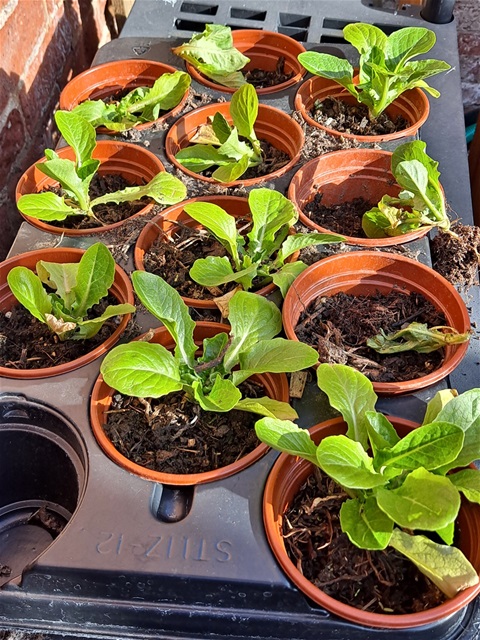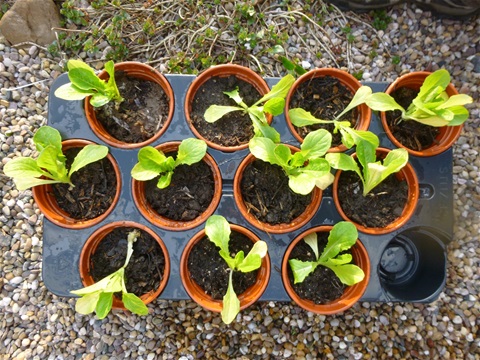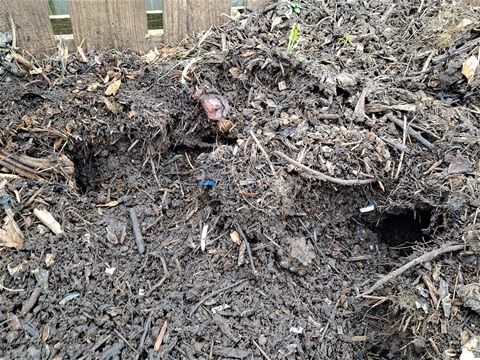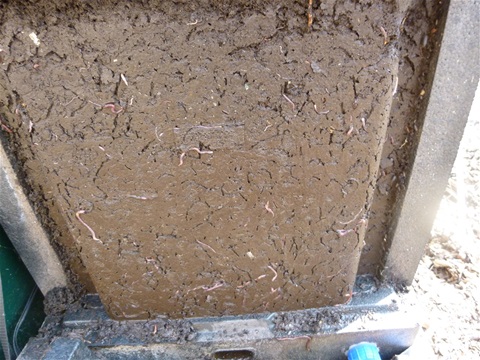Growing in Compost 2
This is the second in a series on growing plants directly in home compost. Home Compost is traditionally applied to the soil as a mulch, in a layer an inch or two thick, to provide organic matter to improve the structure and properties. A gap will be left round the plants so that the compost does not make direct contact. Indeed, if searching the internet under “growing in compost, it would appear that the general consensus is that compost should form only a small proportion of the “soil” material and that it is not advisable to grow directly in compost. Although the evidence of your own eyes, during the season after composting plants such as tomatoes, pumpkins and squash, may show that at least some plants survive and grow well in pure compost heaps. It is also the case that no-dig gardeners who plant directly into compost, can often show a higher yield than obtained by those who dig and plant into the soil.
I planted into compost samples from two different dalek bins, a Green Johanna, Hotbin, Pallet bins (one which has over-wintered), and an anaerobic heap. All samples had been tested using the bag test to check that the composting process was completed. Cos Lettuce are being used as the test plant as they make good leaf growth and should photograph well.
At the end of the second week all of samples of the different composts have supported the growth of the lettuce with the exception of three. These failures where the result of external factors ( the dogs ate the compost and failed to replant the lettuce).
The three are being repeated with the pots moved out of reach of the dogs.
Schools or Allotment /Community Garden project Comparing growth in different composts could provide a simple but photogenic project for children at school or on allotments. A group or class could use pots of different composts to grow plant purchased in strips from the greenhouse or from the local garden centre. The compost could be commercially available comparing different brands, or peat and peat free or taken from home composting bins. If photos are sent to carryoncomposting@gmail.com we will publish them on the website, or they can be posted directly to https://www.facebook.com/carryoncomposting




